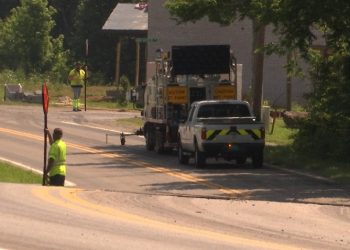Maryville, TN — A devastating incident in New Orleans this week has underscored the importance of effective pedestrian safety infrastructure in urban areas. On Wednesday morning, at least 10 people were killed and dozens more were injured when a man drove onto Bourbon Street following the New Year’s Eve festivities. The attack has raised serious questions about the reliability of protective barriers, particularly as cities across the country grapple with how to better secure public spaces.
The bollards, retractable steel barriers designed to protect pedestrians, had been temporarily removed for replacement, as part of ongoing preparations for the upcoming Super Bowl. New Orleans Mayor LaToya Cantrell explained that these bollards had been in place for more than a decade but had become damaged over time due to Mardi Gras beads and other debris, rendering them ineffective. As a result, the New Orleans Police Department had deemed them insufficient for safeguarding the area.
Cantrell further noted that the bollards were being replaced as part of a broader infrastructure package aimed at improving safety ahead of the Super Bowl. She acknowledged that the replacement project was not expected to be completed in time for New Year’s Eve, but city officials believed they had implemented sufficient alternative measures, including the use of police cars and other barriers, to cover the area.
Despite these precautions, the suspect managed to drive around the temporary barriers and onto the sidewalk, where pedestrians were gathered. New Orleans Police Chief Anne Kirkpatrick confirmed that while officers were aware of the bollard issues and had devised a plan to address them, the perpetrator was able to defeat these safety measures. “We did indeed have a plan, but the terrorist defeated it,” Kirkpatrick said, expressing frustration at the breach in security.
Adding to the concerns, Kirkpatrick also mentioned that other safety measures, such as wedges designed to block vehicles, were not deployed due to malfunction issues. The wedges, which can be placed on roads to block access, sometimes became stuck, hindering emergency access and preventing vehicles from getting in or out of the area. As a result, city officials chose not to rely on the wedges during the celebration.
The incident has prompted discussions about the need for cities to invest in more reliable and robust pedestrian safety solutions. In Knoxville, Tennessee, city officials have taken proactive steps to protect pedestrians by installing new bollards in key areas downtown. In early December, the city spent $90,000 to install bollards along Union Street from Walnut to Gay Street and on Market Street from Clinch Avenue to Market Square. According to Chip Barry, Deputy Chief of Operations for Knoxville, the goal was threefold: to enhance pedestrian safety, improve the efficiency of street closures, and make downtown more appealing.
“We’re committed to providing better safety for pedestrians, especially as we frequently close streets for events. This is also about making it more efficient for our engineering team and improving the city’s appearance,” Barry said. The new bollards in Knoxville replace outdated road closure barriers, which can now be used in different parts of the city.
The contrast between New Orleans and Knoxville highlights the challenges many cities face in balancing the need for effective security with practical urban planning. While temporary solutions may serve in the short term, the tragic event in New Orleans serves as a stark reminder of the importance of reliable and well-maintained infrastructure to ensure the safety of pedestrians in crowded public spaces.













